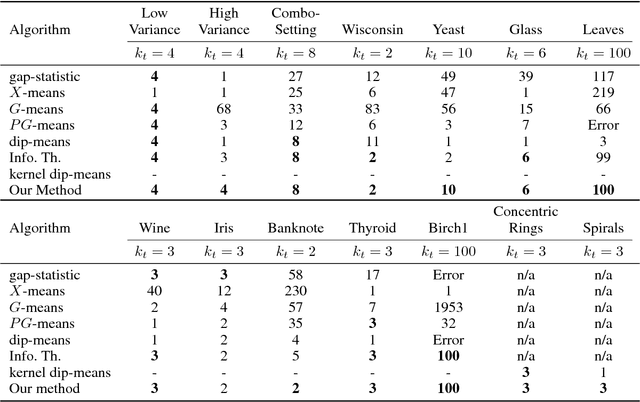Amber Srivastava
On Fulfilling the Exigent Need for Automating and Modernizing Logistics Infrastructure in India: Enabling AI-based Integration, Digitalization, and Smart Automation of Industrial Parks and Robotic Warehouses
Oct 02, 2023Abstract:To stay competitive, the Low- or Middle-Income Countries (LMICs) need to embrace Industry 4.0 and Logistics 4.0. This requires government-level interventions and policy-making to incentivize quality product solutions and drive innovation in traditionally resistant economic sectors. In this position paper, we support the establishment of Smart Industrial Parks (SIPs) with a focus on enhancing operational efficiencies and bringing together MSMEs and startups targeting niche clientele with innovative Industry 4.0 solutions. SIPs along with the phased deployment of well-planned robotic automation technologies shall enable bringing down India's untenable logistics costs. Toward the successful execution of SIPs, we are required to implement the efficient allocation of manufacturing resources and capabilities within SIPs. Thus, we emphasize the importance of efficient resource utilization, collaboration, and technology adoption in industrial parks to promote industrial development and economic growth. We advocate the use of a cloud-based cyber-physical system for real-time data access and analysis in SIPs. Such centralized cloud-based monitoring of factory floors, warehouses, and industrial units using IoT infrastructure shall improve decision-making, efficiency, and safety. Digital Twins (DTs), which are cyber-replicas of physical systems, could play a significant role in enabling simulation, optimization, and real-time monitoring of smart manufacturing and distributed manufacturing systems. However, there are several challenges involved in implementing DTs in distributed manufacturing systems, such as defining data schemas and collaboration protocols, ensuring interoperability, the need for effective authentication technology, distributed machine learning models, and scalability to manage multiple DTs.
Parameterized MDPs and Reinforcement Learning Problems -- A Maximum Entropy Principle Based Framework
Jun 17, 2020



Abstract:We present a framework to address a class of sequential decision making problems. Our framework features learning the optimal control policy with robustness to noisy data, determining the unknown state and action parameters, and performing sensitivity analysis with respect to problem parameters. We consider two broad categories of sequential decision making problems modelled as infinite horizon Markov Decision Processes (MDPs) with (and without) an absorbing state. The central idea underlying our framework is to quantify exploration in terms of the Shannon Entropy of the trajectories under the MDP and determine the stochastic policy that maximizes it while guaranteeing a low value of the expected cost along a trajectory. This resulting policy enhances the quality of exploration early on in the learning process, and consequently allows faster convergence rates and robust solutions even in the presence of noisy data as demonstrated in our comparisons to popular algorithms such as Q-learning, Double Q-learning and entropy regularized Soft Q-learning. The framework extends to the class of parameterized MDP and RL problems, where states and actions are parameter dependent, and the objective is to determine the optimal parameters along with the corresponding optimal policy. Here, the associated cost function can possibly be non-convex with multiple poor local minima. Simulation results applied to a 5G small cell network problem demonstrate successful determination of communication routes and the small cell locations. We also obtain sensitivity measures to problem parameters and robustness to noisy environment data.
A Clustering Approach to Edge Controller Placement in Software Defined Networks with Cost Balancing
Dec 05, 2019



Abstract:In this work we introduce two novel deterministic annealing based clustering algorithms to address the problem of Edge Controller Placement (ECP) in wireless edge networks. These networks lie at the core of the fifth generation (5G) wireless systems and beyond. These algorithms, ECP-LL and ECP-LB, address the dominant leader-less and leader-based controller placement topologies and have linear computational complexity in terms of network size, maximum number of clusters and dimensionality of data. Each algorithm tries to place controllers close to edge node clusters and not far away from other controllers to maintain a reasonable balance between synchronization and delay costs. While the ECP problem can be conveniently expressed as a multi-objective mixed integer non-linear program (MINLP), our algorithms outperform state of art MINLP solver, BARON both in terms of accuracy and speed. Our proposed algorithms have the competitive edge of avoiding poor local minima through a Shannon entropy term in the clustering objective function. Most ECP algorithms are highly susceptible to poor local minima and greatly depend on initialization.
On the True Number of Clusters in a Dataset
Oct 31, 2018



Abstract:One of the main challenges in cluster analysis is estimating the true number of clusters in a dataset. This paper quantifies a notion of persistence of a clustering solution over a range of resolution scales, which is used to characterize the natural clusters and estimate the true number of clusters in a dataset. We show that this quantification of persistence is associated with evaluating the largest eigenvalue of the underlying cluster covariance matrix. Detailed experiments on a variety of standard and synthetic datasets demonstrate that the proposed persistence-based indicator outperforms the existing approaches, such as, gap-statistic method, $X$-means, $G$-means, $PG$-means, dip-means algorithms and information-theoretic method, in accurately predicting the true number of clusters. Interestingly, our method can be explained in terms of the phase-transition phenomenon in the deterministic annealing algorithm where the number of cluster centers changes (bifurcates) with respect to an annealing parameter. However, the approach suggested in this paper is independent of the choice of clustering algorithm; and can be used in conjunction with any suitable clustering algorithm.
 Add to Chrome
Add to Chrome Add to Firefox
Add to Firefox Add to Edge
Add to Edge